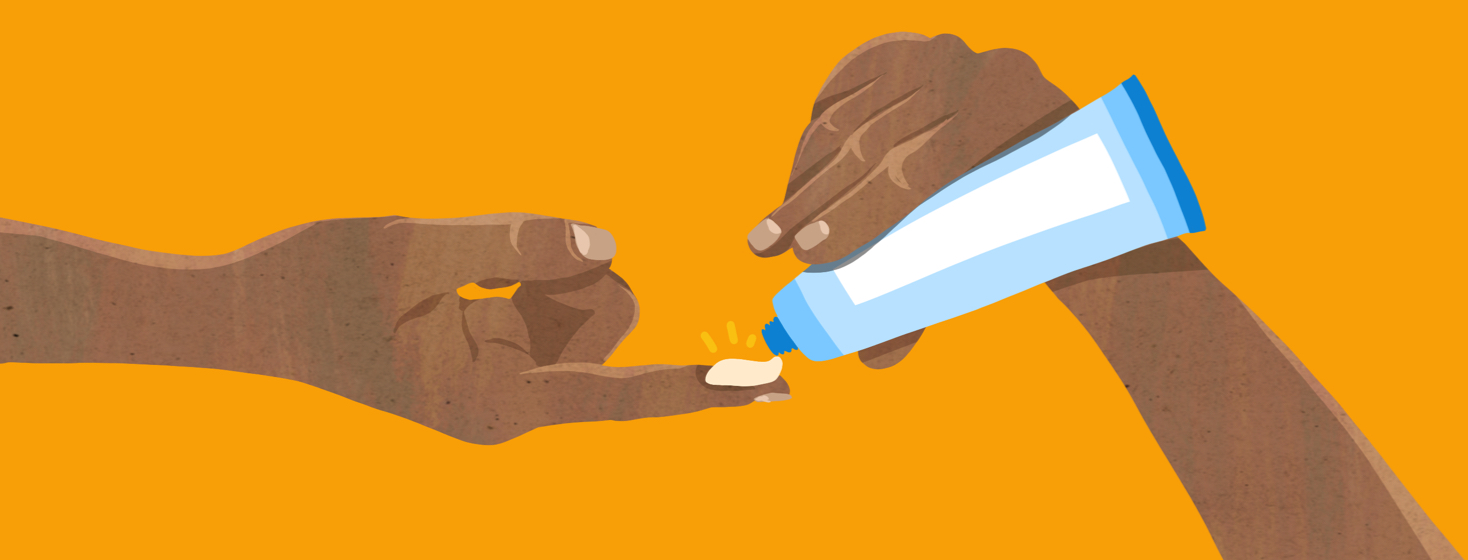Topical Steroid Dosage on Labels
Topical steroids are a common drug prescribed to our community. It is a powerful and magical medicine, but have you ever wondered how it should be used?
When the steroid is prescribed to us, we are usually told when to use it during the day - once, twice, "when needed." It sounds pretty clear. But how much of it do we use during that time? What is safe?
What is the fingertip unit of measurement?
One way the medical community has tried to rectify this is the fingertip unit of measurement. For each part of the body, there is an amount in the size of your pointer finger that is designated appropriately for that area. The bigger the body part, the more steroid will be needed.
For example, the National Eczema Association (NEA) has the US fingertip portion displayed on its website.
How much should be used?
As you can see, up to seven fingertips can be used for your back and bottom. And as little as two and a half for the face and neck. In my opinion, steroids should never be used on the face, but that is what the recommended dosage suggests.
How much would it take to cover your body?
Now that you have the fingertip unit, there is a vague sense of ease knowing that some sort of dosage is out there.
You have your tube in hand, and you're about to do your nightly routine. With the fingertip unit handy, you start to squeeze the tube. You have eczema on your hands, elbows, backs of knees, and neck. So...
- Hands and Arm = 4 fingertips. Hmmm, well okay, maybe only 3.5 since it's just your elbow? x2
- Leg and Foot = 8 fingertips. Hmmm again. You only need for knees, so maybe 3? x2
- Neck and Face = 2.5 fingertips. Ahhhh, again guessing. Maybe just 1.5?
Oof, now you are feeling a bit lost. But, you add them all up. It comes to 14.5 fingertip units. Cool. But, what does that actually mean?
How does that convert to grams?
More math coming at you!
In terms of fingertips, we need to understand grams. Each tube has a specific amount of grams of steroid. Let's say your tube has 15 grams.
1 fingertip = 0.5 grams
In that case, your nightly usage would be 14.5 x 0.5 = 7.25 grams. Now you know that you use 7.25 grams every time you apply the steroid. However, you are told to use it once in the morning and once at night, so take your 7.25 grams and double it to the 14.5 grams.
So what's the problem?
If your tube is 15 grams and you're using 14.5 grams a day, then you're basically using a WHOLE tube a day. As great as the fingertip unit sounds, now we are in some perilous territory. How on earth is it safe to use a whole tube of steroids a day?
The issue? We don't have specific evidence. Why? Because there is no scientific research done on what constitutes a safe dose.
Why do topical steroids need dosage labels?
This is why a dosage on the label is paramount for the protection of the patient. We are at the whim of its usage without a clear indication of what is safe and unsafe.
But, even more so, there are other things missing from the label as well that could help better inform the patient.
What else could the label include?
- That it is a steroid. I have never seen a label that states it is a steroid - it's only the complicated medical name of the drug that we see. Some people don't even know they are using a steroid!
- We never know the potency/class of the steroid. Is it low? High? Mid-range? This is important to know! To place any sort of steroid in a sensitive area is dangerous enough, but what if it's a high-potency one?
- What is the maximum dosage to never exceed? If you need 14.5 grams a day, but the tube says 10 grams max a day, then there is a definite need for your doctor to help you create a better regimen.
All of these things matter.
Remember - I am only a patient. You should speak with a healthcare professional about your concerns or questions regarding these labels and your prescribed treatment regimen.

Join the conversation